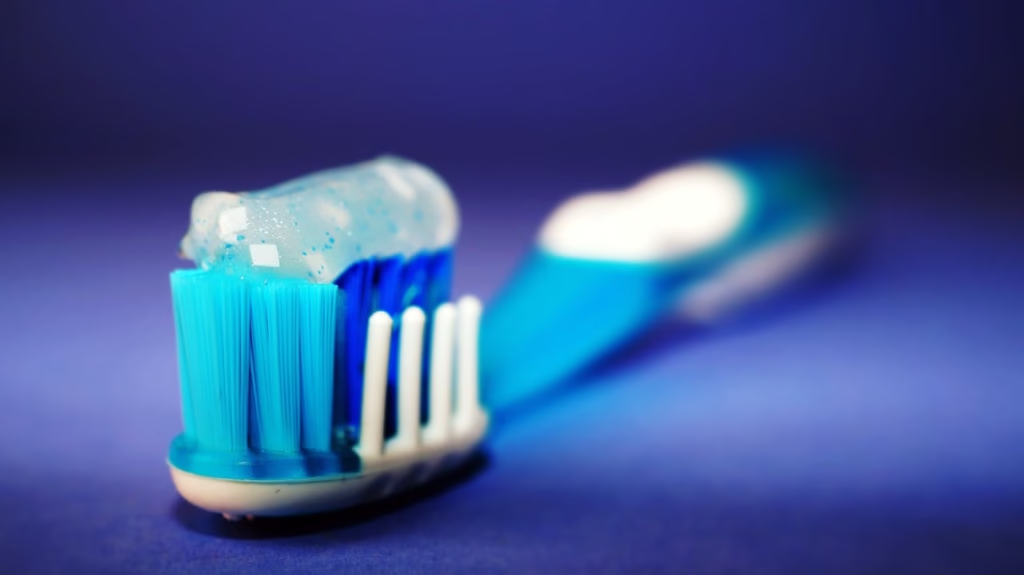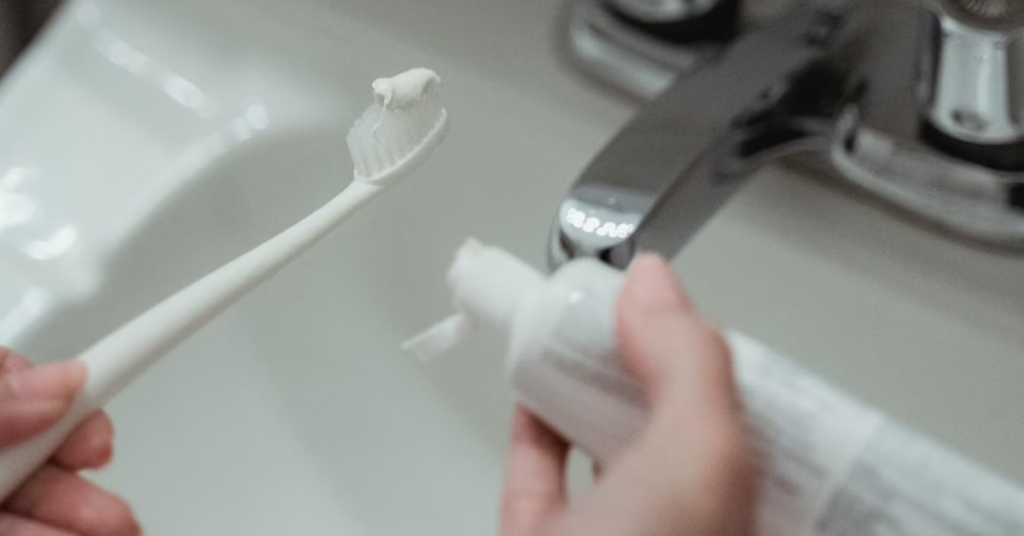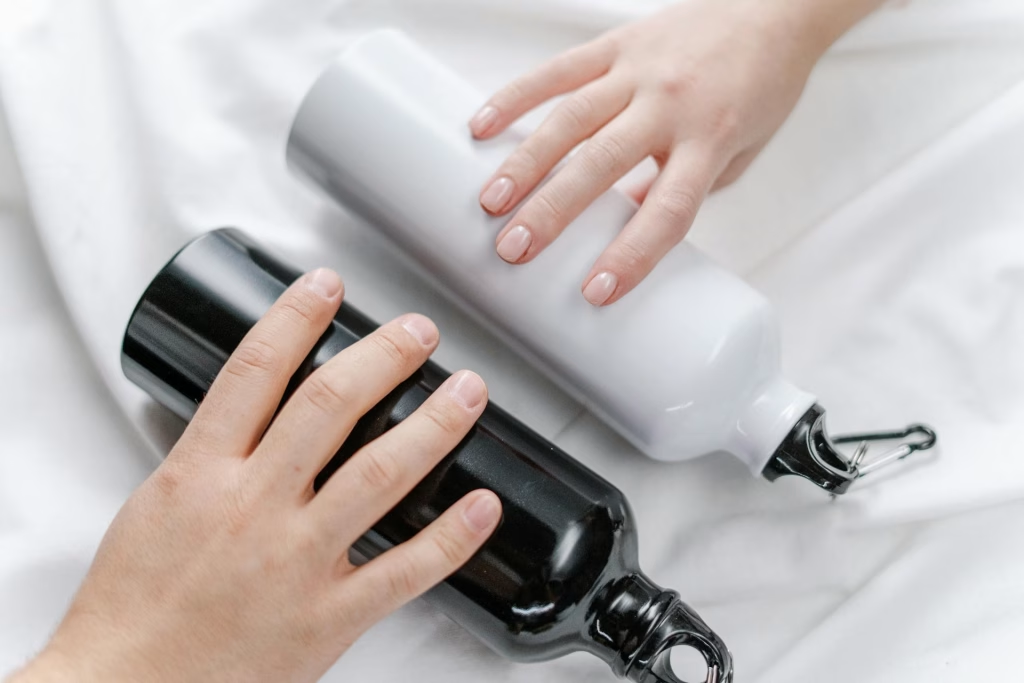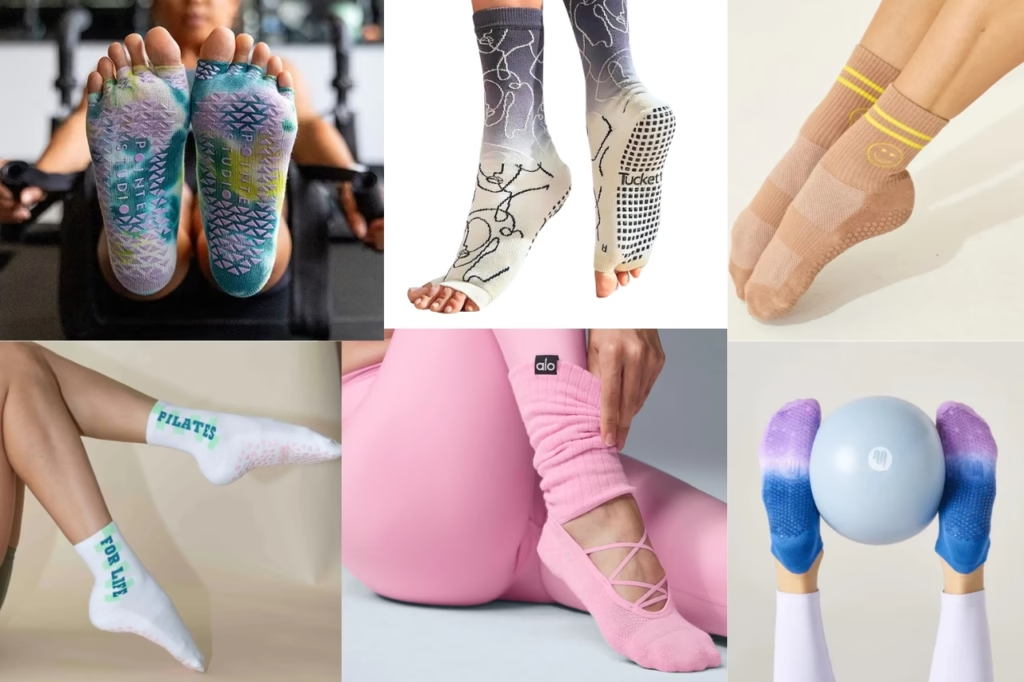As we become more conscious of what we put on and into our bodies, it’s only natural to question what’s in our toothpaste. I set out to find a product that’s not just effective but also made with safe, clean ingredients, and quickly discovered how confusing that search can be.
This guide breaks down what to look for, and what to avoid when choosing a toothpaste. You’ll learn which ingredients to avoid, which ones can support your oral health, and how to avoid hidden risks like microplastics or fluoride overconsumption. Whether you’re looking for a natural alternative or just want a cleaner version of your usual brand, this article will help you make an informed, confident choice.
What Ingredients Should You Avoid in Toothpaste?
- BHT (Butylated Hydroxytoluene) – Has been shown to potentially disrupt endocrine function, particularly affecting thyroid hormones, and may also impact sex hormones. It can also be very toxic to marine life.
- Triclosan – A potential endocrine disruptor with possible links to antibiotic resistance and gut health issues (4)(5)
- Polyethylene microbeads / PEG-based micro-plastics- accumulate in your body and in the environment
- Titanium Dioxide – The IARC has classified it as a potential human carcinogen ( Group B). Particular concerning when it is used in [nano] form or is inhaled(1)(2)
- Sodium Lauryl Sulfate (SLS): A foaming agent that can irritate the mouth and may cause mild inflammation or ulcers. (3)
- Phenoxyethanol: A preservative that’s considered safe in small amounts, though it is only regulated in the U.S. and Canada. It is biodegradable, but high doses harm microbes and reduce biodiversity.
- Artificial Colors (FD&C dyes) & Synthetic Sweeteners (saccharin, aspartame)- sweet flavor encourages swallowing in kids; saccharin is linked to altered gut microbiota. Avoid multicolor toothpastes and choose a white toothpaste with no added artificial colors that are there for aesthetic reasons only.
Always read the ingredient list, similar to food, if the list is short and doesn’t have too many unnecessary ingredients, the toothpaste will be better for you. You can also use scanning apps like Yuka to make sure there are no harmful ingredients in the toothpaste. Look for words like “ SLS-free, triclosan-free, no artificial colors or sweeteners, etc.” on the packaging, altho you can’t fully rely only on the marketing.
Fluoride Toothpaste: Pros and Cons
Do we need fluoride in our toothpaste? It depends, but most likely YES.
A recommended amount (a pea-sized amount for adults and a rice-sized amount for children under 3) of fluoride toothpaste is not harmful if you brush and spit it out. It is still one of the best ways to prevent cavities. However, the issues start with the overconsumption of fluoride.
Overconsumption of fluoride in water is a problem in countries that are naturally high in fluoride, including Sweden, China, Sri Lanka, Finland, Zimbabwe, and Gabon. Or in countries where fluoride is added to the water artificially, including the United States, Australia, Canada, and parts of the UK, Ireland, Spain, Singapore, Malaysia, and Brazil (6).
High fluoride exposure, especially above 1.5 mg/L, is linked to lower IQ in children, but evidence for harm at levels used in community water fluoridation is weak.(7)(8)
Excessive fluoride exposure (above 1.5 mg/L) can also increase the risk of dental fluorosis, a condition that causes mottling of teeth. (9)Young children often swallow toothpaste, which can be dangerous, especially if a large amount is ingested.
So if you live in an area where water is naturally high in fluoride or is artificially fluorinated, you might want to choose a toothpaste without fluoride, or make sure you only use a recommended amount to stay within the recommended limits.
In summary:
- Check your local water’s fluoride levels.
- If using a fluoride toothpaste, consider pairing it with a fluoride-free mouthwash.
- Use only the recommended amount of toothpaste, especially for children.
Hydroxyapatite as an Alternative
Hydroxyapatite is becoming very popular in toothpastes without fluoride. Hydroxyapatite closely mimics the natural mineral found in tooth enamel. It is proven to rebuild and smooth enamel and reduce teeth sensitivity. Most hydroxyapatite toothpastes use the nano form (nHAp).
There are emerging concerns that nanoparticles could penetrate the bloodstream and accumulate in our bodies or even cause DNA changes. But so far, there are no studies confirming that in recommended doses in humans, and these concerns are only proven in animal studies with much larger doses used.
The shape of the nanoparticle is more important than its size. Needle-like fibers could, in theory, behave like tiny asbestos; therefore, those shapes are banned in EU(10). Typically, nano-hydroxyapatite toothpastes are manufactured with particles that are rod-shaped.
How does Hydroxyapatite compare with fluoride?
In its nano form, Hydroxyapatite, is equally effective in enamel remineralization and reducing lesion depth as fluoride (11)
In short,
Hydroxyapatite is compatible with fluoride, if you are choosing a fluoride-free toothpaste, and is safe in toothpastes up to 10% concentration with particles that are rod-shaped, not needle-shaped. Although it is a very promising alternative to fluoride, it is not as established and doesn’t have as much data as fluoride.
Microplastics and Packaging

When researching microplastics, I came across information that toothpastes are a source of microplastics in our bodies and the environment.
A regular toothpaste tube is made of different kinds of laminated plastics (often with a metal layer) that are difficult to recycle, meaning billions of tubes end up in landfills or oceans each year.
I thought that microplastics come from the packaging, but I didn’t realize that plastic could also be added to the paste. Although a lot of brands have phased out microplastic beads in toothpastes, they still can be found in some countries, including Malaysia, Turkey, India, Indonesia, and Vietnam(12). So far, 15 countries, including the US, Canada, and the UK, have banned microbeads in cosmetics, including toothpaste(13); however, other forms of microplastic ingredients, for example, certain binding agents and thickeners in toothpaste like carbomer or PVP are synthetic polymers that are a form of microplastics(14).
Microplastics in toothpaste remain a major concern for both human health and the environment. Here are a few steps you can take to minimize them.
- Choose toothpaste in aluminum or metal packaging. Make sure to open and clean the tube before recycling.
- Buy toothpaste without microbeads and synthetic thickeners and opt for more natural toothpastes.
- Consider using toothpaste tablets instead. Most come in plastic-free packaging and are more environmentally friendly than traditional tubes.
Heavy Metals In Toothpastes
Multiple studies emerged recently stating that many commercial toothpastes, even the ones that are marketed as more “clean”, have been found to contain large amounts of heavy metals.
This poses a danger not only to our health, but also to the environment after the toothpaste is rinsed off (15).
Unfortunately, toothpaste manufacturers do not disclose the heavy metal testing, and it is difficult to know which toothpastes are the safest.
One of the most reliable sources to check if your toothpaste is contaminated by heavy metals is joining the Lead Safe Mama community. Where they gather funding and send off products to be tested for Lead, Mercury, Cadmium, and Arsenic. (16) As well as checking their tested list, you can also submit and help fund a toothpaste you would like to test for heavy metals.
Conclusion
Selecting the right toothpaste shouldn’t be overwhelming. By understanding which ingredients help and which may harm, you can make a decision that supports both your health and the planet.
Curious about which toothpaste options are safest and most effective? Check out our curated lists of the best toothpastes and best toothpaste tablets (coming soon) for every need and budget.
Please Note: This post is for informational purposes only and is based on research. It’s not medical advice. It’s always best to consult a healthcare professional with health concerns. Enjoy reading!
Silvija Meilunaite PN1-NC, is a certified nutrition coach and a writer in the nutrition and self-improvement field with a passion for exploring science-based knowledge focusing on holistic health and plant-based nutrition.
Featured in the Wellness on Time magazine.
- S. Meilunaitehttps://barefootbasil.com/author/silvootegmail-com/
- S. Meilunaitehttps://barefootbasil.com/author/silvootegmail-com/
- S. Meilunaitehttps://barefootbasil.com/author/silvootegmail-com/
- S. Meilunaitehttps://barefootbasil.com/author/silvootegmail-com/




